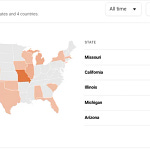This episode uses as its starting point the piece from The Embassy - Anatomy of Belief - which uses as its starting point the movie Anatomy of a Fall.
Here is an excerpt:
Anatomy of a Fall is set in France, the house that is the principle setting is high up in the snowy mountains. There is (as you might guess) a “fall” in this movie - a physical fall causing the death of someone - but it isn’t the story of a person who fell. Anatomy of a Fall is the story of a family. And the story of belief. The father death is the opening move of the story, leaving a mother and son (and dog) to deal with what comes after. Was this fall a suicide? an accident? or a murder? We don’t know. Nobody, except perhaps the mother, Sandra, played brilliantly by Sandra Huller (her performance was nominated for an Academy Award), knows - and she may not. If it is a murder, she is the only one who could have committed it. But we don’t know. Their son, Daniel, has a vision impairment and struggles to interpret these events - and that serves as a picture for us, the viewer. We see, but not clearly - we know, but only in part. The family dog also plays a key role, highlighted by his brilliant blue eyes - perhaps he is the only character who sees everything.
This dynamic is fully at work during the trial that follows - and heightened by the language barriers that exist in this French courtroom. Sandra, who has German as her native tongue and who speaks English well and French less well, sometimes has to resort to English because her French doesn’t allow her to tell her story (or conceal it) as clearly as she needs to. As you might expect, unexpected things are revealed - intimate details of a conflicted home - all while Daniel listens, trying to understand, trying to piece it together. Daniel doesn’t understand. He doesn’t have all the facts he needs - they aren’t really all available - but he comes to the conclusion that “sometimes you have to decide”. He has to decide what he thinks happened, and that decision will then impact his interpretation of all he has learned and all he will learn. It is more than deciding what happened, it is deciding what he believes, and therefore will likely believe in the future.
Now faith is confidence in what we hope for and assurance about what we do not see.
Hebrews 11:1
This is what we have to do - we have to decide what we believe without all the facts. And that belief will form an interpretative grid for the facts and events that follow in our lives. It doesn’t mean we will then have all the facts, or even more facts - it just means belief - without any more facts than we may have started with.
Read the whole piece!
Links
Stages of Faith - James W. Fowler - HarperOne - 1995













Share this post